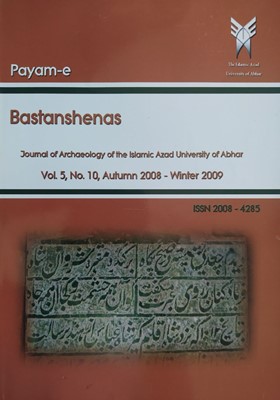Stratigraphy in Sounding one of Tapeh Borj Neyshabur, an Interpretive Approach
Subject Areas : Prehistoric Archaeology
1 - Ph.D. in Archaeology, Department of Archaeology, University of Tehran, Tehran, Iran.
Keywords: Bronze Age, Chalcolithic, Archaeological Stratigraphy, Northern East of Iran, Tapeh Borj,
Abstract :
Stratigraphy is a basic method in filed archaeology. The main purpose of the stratigraphy is data gathering for relative chronology and sequence explanations. This paper has provided descriptive information of the Borj settlement, east of Neyshabur, which is located in a prehistorically unknown area. Accompanied with descriptive information, this paper discusses about tow theoretical facts in stratigraphy; the first is the surface layer and being surface layers. In this discussion, the possibility of layer change during upper layer construction and its material culture has been presented. The second fact is the original organizer of the remains, structures and deposits of each layer. This factor is the archaeologist interpretation according to layer context during stratigraphy. a framework is suggested to assess the value of each layer and its information based on the second fact. Having the presented facts in mind can help the archaeologist to realize the chronology and the sequence and provides the formation process explanations based on layers and soundings. Borj sounding information presented that the context of the sounding has been under use in the end chalcolithic and the beginning of Bronze Age. Interpretation approach and two-presented fact in a theoretical perspective have led the way to the interpretation of sounding condition. The existence of alluvial deposits in the lower layers, the existence of two heights in chalcolithic era, and border condition of the sounding are some of the presented interpretations.
_||_


